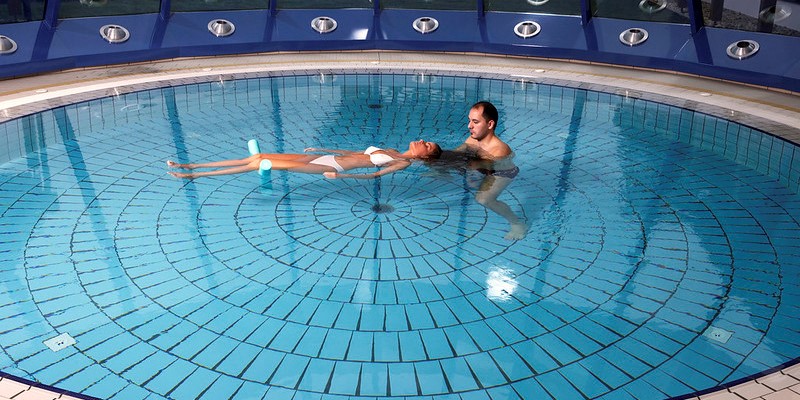
Aquatic Yoga — also called Aqua Yoga or Water Yoga — is as simple as it sounds; it’s doing yoga in water, typically in a swimming pool, but it can also be done in any other water body.

You can carry out most of the traditional yoga exercises in water, which includes pranayama (breathwork), meditation, and yoga poses (asanas). Nonetheless, because of the buoyancy and resistance of water, doing yoga poses in water have another quality.
Likewise, some yogic exercises are adapted to the specifics of an aquatic environment. For instance, meditation will usually be done floating on your back, and as a rule you will not put your head under water, which makes for some modifications of certain yoga poses.
You would wear swimwear, and the exercises are usually performed in chest deep water, although there are also exercises that can be done in deep water.
Some practitioners also use props (equipment) to enhance the practice, like pool noodles, pool dumbbells, kickboards, inner tubes, yoga belts, floating belts, or even ankle weights.

Aquatic Yoga can be especially beneficial for people suffering from arthritis or other chronic pain conditions, but also for pregnant women, because water offloads one’s weight and hence makes it a low-impact practice that gives less pressure (and pain) on joints and the back.
Some of the health benefits of Aquatic Yoga include pain relief, improvement of balance, muscular strength, and postural control, increased stretching capacity, reduction of swellings, increased range of motion of the joints, lowered blood pressure, enhanced body awareness, and deep relaxation for body and mind.




















